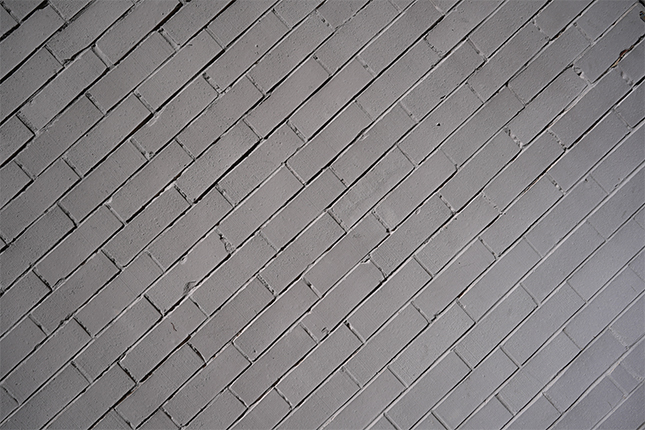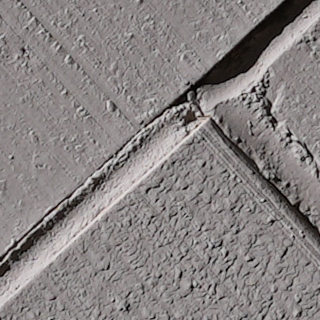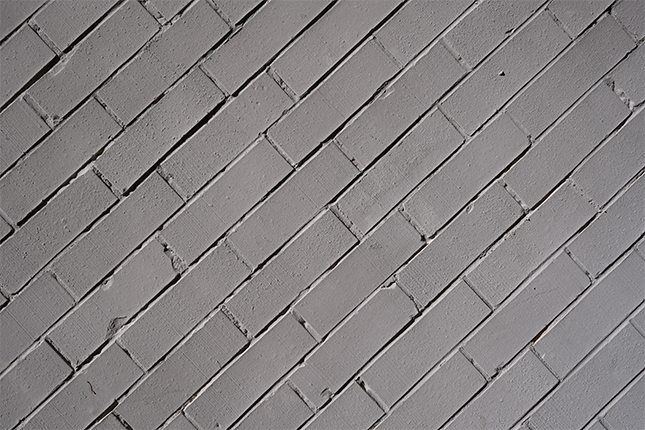| 16-35mm | |
|---|---|
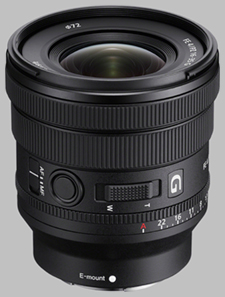
|
|
Your purchases support this site
Buy the Sony FE PZ 16-35mm f/4 G SELP1635G
Updates:
04/07/2022: Gallery Images added
04/22/2022: Hands-on Review added, Gallery updated
05/02/2022: Review updated with Power Zoom sample video
Sony FE PZ 16-35mm F4 G Hands-on Review
A compact, lightweight full-frame wide-angle zoom fits the bill for hybrid media creators
by William Brawley | Posted 04/22/2022
 |
|
Sony A7 IV: 31mm, F4, 1/320s, ISO 100
|
Sony recently expanded their full-frame lens lineup with yet another wide-angle zoom lens, and not just any wide-angle zoom but another 16-35mm wide-angle zoom. However, unlike the earlier Vario-Tessar T* FE 16-35mm F4 ZA OSS and the more recent, high-end FE 16-35mm F2.8 G Master lens, this new 16-35mm adds an electronic power zoom mechanism rather than the standard mechanical design. The new Power Zoom makes this latest 16-35mm zoom more usable and desirable for video creators, allowing for precise and smooth zooming control using a camcorder-like switch on the lens. You can control the zoom from the camera, as well, if you use a supported camera body. The Power Zoom design also helps maintain the same center of gravity while zooming and contributes to its compact design.
Of course, this lens isn't designed just for video creators. It's rather well suited for still photographers, as well. The lens has a manual zoom ring (albeit an electric one), a focusing ring, plus a dedicated aperture ring, which is a fairly uncommon feature on zoom lenses. The lens features 13 elements in 12 groups, including a handful of specialized elements to help ensure sharp, high-quality images from edge to edge.
 |
Sony A7 IV: 16mm, F4, 1/320s, ISO 100 |
With this latest wide-angle zoom, full-frame Sony users have several options for their wide-angle, constant-aperture zoom needs. This new Power Zoom lens is an enticing choice if you find yourself more of a hybrid creator shooting both video and stills, or you simply want a super lightweight and compact yet full-frame-format 16-35mm lens.
Let's dive in to see how the lens performs out in the field...
Key Features & Specs
- Wide-Angle Full-frame E-mount zoom lens with constant F4 aperture
- Weighs 353 grams (12.5 oz.)
- Length x Diameter: 88.1mm x 80.5mm (3.5 in. x 3.2 in.)
- 72mm filter thread
- Dust- and moisture-resistant construction
- 13 elements in 12 groups, including 1 Advanced Aspherical, 1 Aspherical, 1 ED Aspherical, 1 Super ED and 1 ED elements
- Maximum magnification: 0.23x at 35mm
- Power Zoom design with lens-mounted zoom control
- Dedicated Aperture Control ring with de-click toggle
- $1,200 MSRP
Design & Handling: Surprisingly light and compact for a full-frame wide-angle zoom, but the power zoom ring isn't the best for stills
Despite being designed for full-frame cameras, the new Sony FE PZ 16-35mm F4 G lens is an incredibly small and lightweight lens, even with its wide-angle zoom design and constant (albeit F4) aperture. In fact, this PZ 16-35mm F4 lens is currently the world's lightest wide-angle zoom for a full-frame camera with an F4 constant aperture, weighing in at just 353 grams (12.45 oz). That's almost half the weight of the FE 16-35mm F2.8 GM lens at 680g (24 oz.), and well under the 518g (18.3 oz.) weight of the earlier FE 16-35mm F4 Zeiss lens.
 |
In addition to its lightweight design, the new lens is also surprisingly small, with a length of 88.1mm (3.47 in.) and a maximum diameter of 80.5mm (3.17 in.) -- and a 72mm filter thread. Unlike the 16-35mm F2.8 GM and, for example, a couple more F4 varieties from competitors -- the Canon RF 14-35mm F4 L IS USM and the Nikon Z 14-30mm F4 S -- the FE PZ 16-35mm F4 lens is completely internally-zooming. In other words, the lens doesn't extend when you zoom, which is convenient in multiple ways. The optical layout is situated in such a way and when combined with the power zoom design, it gives the lens the same center of gravity no matter the focal length. The lens remains consistently balanced throughout its zoom range. This is a pleasing handling characteristic for still photographers, no doubt; the lens is small, light and balances extremely well with Sony Alpha cameras of all sizes. Although I didn't have an APS-C camera to test it, I'm confident that the lens will pair nicely on smaller Alpha cameras, too, such as an A6500.
However, the consistent center of gravity is a more important benefit for video shooters, who may mount their camera on balance-critical rigs like drones and gimbals. Even if you zoom the lens while recording, the support rig can remain evenly balanced and precisely dialed in -- you get an even center of gravity of a balanced prime lens-based camera rig but with the added versatility of zooming.
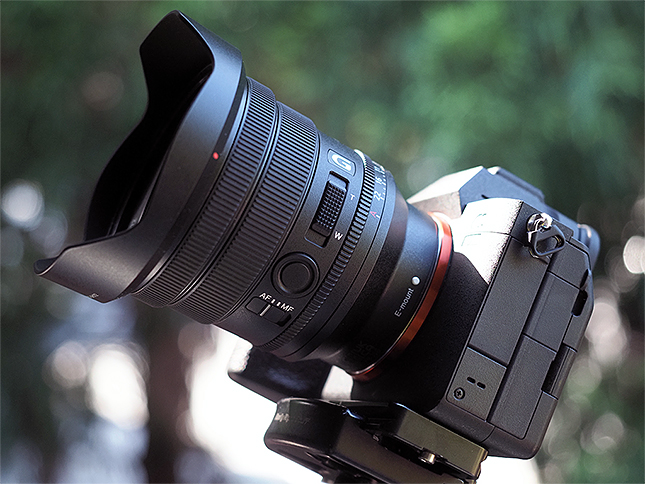 |
When it comes to the exterior design and features of the lens, there's actually quite of bit going on, despite the overall small stature of the optic. Of course, there are rings to control zoom and focusing, but as you might expect with this being a power zoom lens, the zoom ring is completely electronic. The ring, much like the electronic focus ring, will rotate indefinitely whether the lens is powered on or off. When in use, you'll need to pay attention simply to your framing or to the on-screen focal length scale to know the focal length of the lens.
Not only does the zoom ring continue to rotate endlessly, but there also aren't any marked focal lengths on the lens itself, which I found to be a mild annoyance. In the grand scheme of things, this is just a minor quibble, but without any markings -- or a zoom ring with any stops at either end -- you can't tell at what focal length you're currently set. I was always having to wiggle the zoom ring back and forth to know what direction I needed to rotate in order to get to the focal length I wanted. Again, a very minor issue, but it was a noticeable usability difference from the mechanically-linked zoom lenses I've used.
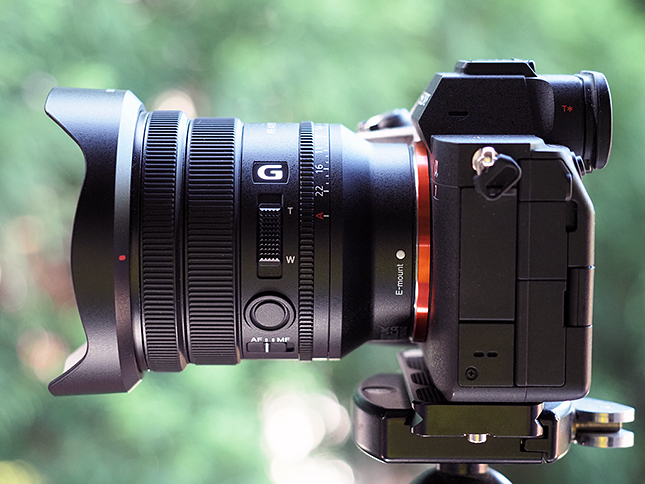 |
In addition to the zoom and focus rings, the PZ 16-35mm lens also has a dedicated aperture control ring, which is a fairly rare feature for a Sony zoom lens. As with most aperture rings on Sony E-mount lenses, this one can be de-clicked for smooth, seamless aperture adjustments or clicked with third-stop increments between F4-F22. The aperture ring also has a soft-locking Auto setting past the F22 mark, which then lets you control the aperture via the camera. Further, there's a separate "Iris Lock" switch that will either lock the aperture ring in the Auto position or vice-versa (not allowing the aperture ring to move into the Auto position).
The lens also features an AF/MF focus mode toggle switch, a programmable L.Fn button and, as mentioned, a Wide-Tele Power Zoom control on the left side of the barrel. This power zoom control is conveniently placed, letting you control the zoom functionality with your thumb while keeping a steady hold on the camera.
 |
Power Zoom
As mentioned before, one of the primary unique features of this new 16-35mm lens is its Power Zoom design. Much like Sony's few other Power Zoom lenses, the PZ 16-35mm zooming function is entirely electronically controlled. There's no mechanical linkage between the zoom ring and the lens elements inside. What is particularly unique about this new lens's power zoom design is that it uses Sony's XD Linear Motors to drive the zooming functionality, which are the same linear actuator motors that Sony uses for autofocus in several of their recent mirrorless lenses. The PZ 16-35mm F4 lens actually has a total of six XD Linear Motors inside (which is impressive in and of itself considering how small the lens is), two for autofocus and four for the Power Zoom mechanism. The use of the XD Linear Motors for the zoom mechanism helps give the lens a responsive zooming feel when manually zooming (ideally) and also helps keep the size and weight of the lens down.
In use, you can operate the zoom function in multiple ways. The lens has a dedicated zoom ring much like a standard zoom lens, letting you operate the zoom like simply by rotating the ring. The difference here is, as I mentioned, the ring is electronically controlling the zoom rather than being mechanically linked. In use, the zoom ring feels mostly fine and rotates very smoothly, as I expected. However, manual zooming doesn't feel as responsive for quick zoom changes. It's great for smooth, slow and precise zooming, but if you need to rack the zoom back to either end of the focal length range, it doesn't feel as quick as a typical mechanical zoom. The zoom ring responsiveness is not adjustable, unfortunately. The zoom ring speed is proportional to the rotation of the ring.
You also have the option of controlling the zoom via a slider switch on the side of the lens, much like on a camcorder. Like the zoom ring, there is no adjustability for the zoom speed or responsiveness. The slider responds to pressure to control speed; a slight or soft push on the switch results in a slow zoom, and a harder, fuller press gives you faster zooming.
There is also yet another way to control zooming: the camera body itself. Cameras such as the ZV-E10, FX2, FX6, and FX9 all have dedicated zoom switches built-in, which can be used to control the PZ 16-35mm's zoom. For other camera bodies, such as the A1, A7SIII and A7IV, you have to go into the menus to set custom buttons for "Zoom Wide" and "Zoom Tele" functions. With the A7 IV I used, I set the rear left directional button for Zoom Wide and the opposing right directional button for Zoom Tele. These custom functions only operate in movie mode, so you still have your standard functions for those buttons when in still photo mode.
Sony PZ FE 16-35mm F4 G Power Zoom Speed Examples 3840 x 2160, 30 fps, H.264 Download Original (545.5MB MP4) |
Now, with these custom buttons on the A7 IV, as well as the zoom lever on the ZV-E10, for example, you can customize the zoom speed for video recording -- and have separate zoom speeds for when you're in standby mode and during recording. For instance, you can set the zoom speed to be quick when in standby mode, so you can make quicker focal length adjustments, but then have the zoom speed much slower and smoother when you are actually recording video. Additionally, you can combine optical zoom with Sony's Clear Image Zoom digital zoom feature to get even more zoom reach from the lens. When you have the zoom speed set to speed setting 1-3 (out of 8), you can seamlessly combine optical zoom and Clear Image Zoom for a total longer zoom range. In practice, this worked like a charm. I was actually also quite surprised how slow speed settings 1-3 compared to the faster standby speeds. However, the transition between optical zoom and Clear Image Zoom for video at this 3 or lower setting did, in fact, appear totally seamless. If you have it set faster, there's a slight but noticeable pause when the lens transitions between optical and digital zoom.
Lastly, zoom can also be controlled remotely with a Remote Commander accessory or even from a mobile device with Sony's Imaging Edge Mobile app.
 |
Sony A7 IV: 31mm, F4, 1/1000s, ISO 100 |
Image Quality: Very sharp across the full zoom range, though watch out for distortion
In terms of image quality performance, the Sony PZ 16-35mm F4 is quite impressive in most areas, particularly when it comes to sharpness in the center. The lens performs very well in terms of image quality overall and across its full zoom range. It's not without some faults, however.
Sharpness
16mm
At the widest end, the PZ 16-35mm has excellent resolving power in the center of the frame, even wide open at F4. Images are sharp with lots of crisp, fine detail. From my test shots, I didn't see any noticeable increase in sharpness as you stopped the lens down a bit. Stopping down to F5.6 through F8, the lens remains very sharp in the center. Going further, F11 still appears very sharp, though maybe just a hair softer than F8. By the time you get to F16, you can see some diffraction-related softness started to creep in, though the overall amount of detail at F16 is still very good. F22, however, is noticeably softer than the wider apertures, though not drastically soft by any means. Feel free to shoot at F22 if you need to (although read further about the corners), but I found optimal sharpness at 16mm is either wide-open or stopped down between F5.6 and F8 if you want or need some more depth of field.
Out in the extreme corners of the frame, sharpness isn't as impressive as it is in the center. At F4, there is some level of softness compared to what I see in the center, but overall detail is still quite good, considering this is a 16mm ultra-wide-angle focal length on a full-frame camera. Yet, if you stop down, there's only a very minor increase in sharpness. To my eyes, F5.6-F8 improves corner sharpness ever-so-slightly, but not really to any meaningful amount. Once again, F11 begins to show a hint of diffraction-related softness, and then it becomes more noticeable as you stop down further; corner sharpness at F22 is quite soft, however -- quite a bit different than F22 in the center.
24mm
Zooming in a bit, I did some more test shots at 24mm, a good middle of the range focal length. Sharpness-wise, it's a similar story to what I saw with 16mm. Wide-open, the lens has excellent resolving power in the center of the frame, and if you stop down to F5.6-F8, the sharpness remains nearly indistinguishable from F4 -- overall, excellent center sharpness throughout this aperture range. At F11, sharpness is also fantastic, if just a hair softer, but you'd really have to be nit-picking to see any change if I'm honest. At F16, softness is a little more noticeable compared to the wider aperture, but sharpness and the level of detail are still quite good. Once more, it's only until F22 that we really see some noticeable level of diffraction-related softness.
Corner sharpness performance overall at 24mm is much better than at 16mm. Wide-open, the 16-35mm's extreme corners show a lot of fine detail, and if you stop down to F5.6-F8, sharpness remains excellent, with just a hint of improvement compared to F4. As you stop down further, softness begins to creep in a bit, though F11-F16 are still very usable in terms of corner sharpness, in my opinion. Corner performance at F22 isn't bad to my eye by any means, but there is a noticeable drop in sharp, crisp detail at this aperture.
35mm
Finally, looking at 35mm, the lens's longest focal length, we see a similar overall behavior as the previous two tested focal lengths when it comes to sharpness in both the center and the corners. Wide-open, the lens is very sharp in the center, with excellent fine detail. Stopping down slightly does sharpen things up just a bit, and the lens remains sharp still at the narrower apertures until around F11. Once again, we see a slight softening at F16, and then a more pronounced (but still quite minor overall) softening by the time you stop down to F22.
Corners are also very sharp at 35mm, even at F4. Corners look excellent, in fact, with lots of resolving power, even in the extreme corners. Stopping down doesn't help much to improve sharpness as it's already very sharp -- F4-F11 all look very good. Again, F16 starts to so slightly softness due to diffraction, and again more pronounced softness still by F22.
Overall, the Sony PZ 16-35mm F4 G lens is a very sharp lens across its full focal length range, especially in the centers, and even when shot wide open. Corner performance is also quite impressive, though, perhaps understandably, it's not as sharp in the far corners at 16mm. Overall, the lens offers solid sharpness performance across its zoom range.
Vignetting
For the most part, vignetting is relatively minor across the zoom range, although the lens is not devoid of some corner darkening at times. Most notably -- and perhaps not all that unexpected for a lens such as this -- there is some noticeable vignetting at 16mm F4 -- especially so when looking at the RAW files. Stopping down the lens, even to just F5.6, clears up a lot of the vignetting, but there's still some slight dimming in the corners until you get to around F11. It should be noted that by default, the A7 IV I used does some Shading Correction processing for JPEGs with this lens. The RAW files, available for download in the gallery, will show the images uncorrected.
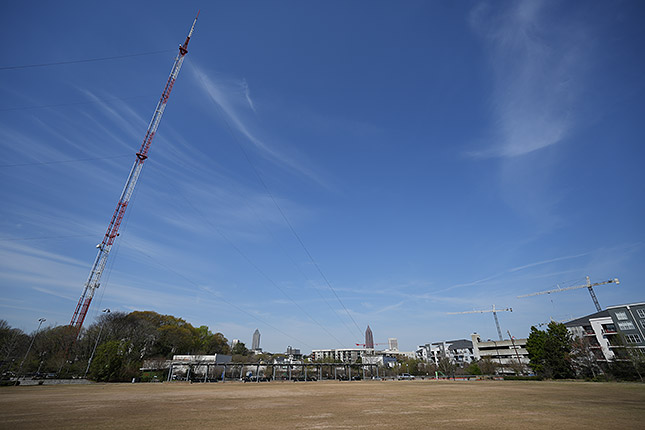 |
Sony A7 IV: 16mm, F4, 1/160s, ISO 100 |
 |
Sony A7 IV: 16mm, F5.6, 1/800s, ISO 100 |
As expected, vignetting is much less of an issue as you zoom into the longer focal lengths. There still is an ever-so-slight amount at 24mm, which is hardly noticeable unless you compare the same shots from wider apertures against a 24mm F11 shot; once more, stopping down to F11 brightens up the faint hint of vignetting that exists at this focal length. Similarly, 35mm has a hint of vignetting at the wider aperture settings, but again, it's minor vignetting. Stopping down to F16 here gets rid of the vignetting based on my test shots.
Chromatic Aberration
Chromatic aberration was essentially a non-issue during my time with the lens, even at 16mm and F4. The Sony PZ 16-35mm lens utilizes several exotic lens elements, including two advanced aspherical lenses and an aspherical element to help with sharpness as well as suppress spherical aberrations. Meanwhile, the combination of an ED aspherical element plus a Super ED element and an ED element helps reduce chromatic aberrations and improve color accuracy.
 |
Sony A7 IV: 17mm, F5.6, 1/400s, ISO 100, -0.7EVs |
 |
Crop from unedited RAW file; upper left corner area |
This optical design works as advertised. I was quite impressed, as I saw essentially little to no CA at all, even when shooting difficult high-contrast scenes, such as the bright sun shining through a forested canopy. Looking closely at RAW files, I could occasionally find some mild purple fringing in extreme situations, such as along the edges of small and dark, silhouetted tree branches backlit by a bright sky. However, again, it was very minor, and I really had to go looking for it in order to see it.
(One more thing I should mention that the A7 IV I was using defaults to some in-camera CA correction for this lens, though you can disable it if you want to.)
Distortion
In terms of image quality performance so far, the Sony PZ 16-35mm is getting two thumbs up in almost every area. Sharpness is great, vignetting is mild, and CA is basically not there. The one area where the PZ 16-35mm lens comes up short, so to speak, is with respect to geometric distortion. There's some degree of distortion present at all focal lengths, but it's especially severe at 16mm when looking at uncorrected RAW files. The camera, the A7 IV in this case, does some pretty heavy distortion correction for the in-camera JPEGs (which work quite well, to be fair), but the RAW files will display uncorrected and showcase the heavy distortion.
 |
Sony A7 IV: 16mm, F4, 1/1000s, ISO 100 - JPEG |
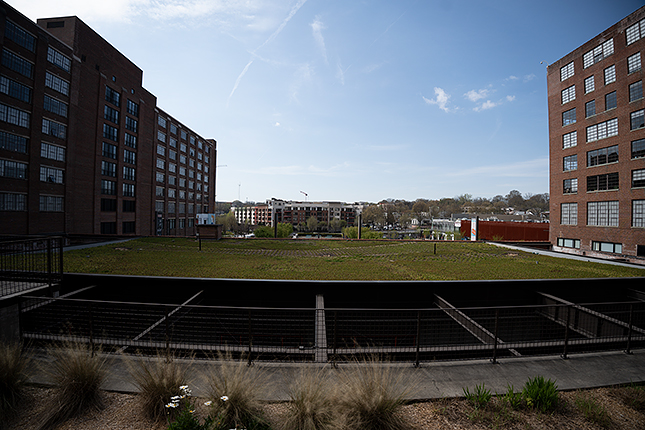 |
The uncorrected raw file |
At 16mm, the lens exhibits some pretty severe barrel distortion, as you can see by the example images below. It's strong enough distortion that I would definitely want to use some post-processing to correct for it when editing RAW files. The in-camera JPEG processing of the A7 IV does an impressive job, however, of fixing it for JPEGs.
 |
JPEG |
 |
Unedited RAW file |
As expected, barrel distortion is less of an issue as you zoom to the longer focal lengths. At 24mm, you can see some barrel distortion in the RAW files, but it's nowhere near as severe as it was at 16mm. When you get to 35mm, on the other hand, we now see some mild pincushion distortion.
Overall, the optical quality of this lens is still great by most counts. If you shoot stills and edit RAW files, you'll definitely want to correct for geometric distortions in post.
Autofocus: XD Linear Motors provide quiet and super-fast autofocusing performance
As mentioned earlier, the PZ 16-35mm lens uses two XD (extreme dynamic) Linear Motors to power the autofocusing system. This compact, lightweight and gearless focusing system provide high-thrust and precise focusing movements that are both extremely fast, quiet and accurate, making this an excellent focusing system for a lens designed for both movies and stills.
In use, the PZ 16-35mm provides a fantastic autofocusing experience, much like I've seen with other Sony lenses using XD Linear Motors. The focusing element(s) inside the PZ 16-35mm is also particularly small and lightweight, which surely aids in swift AF speeds. Though I mostly shot stills with this lens, I did not experience any drawbacks or issues with focusing precision or speed. At both ends of the zoom range, the lens's AF speed felt nearly instantaneous, even when focusing from the minimum focusing distance to infinity. Autofocusing from near to infinity focus easily took one second, if not less than that -- put another way, by the time you were done half-pressing the shutter button, the lens was in focus.
 |
Sony A7 IV: 16mm, F5.6, 1/160s, ISO 100 |
While I primarily shot with AF, the PZ 16-35mm, of course, offers manual focusing as well. Like most, if not all, mirrorless lenses, the PZ 16-35mm is a focus-by-wire lens. The focusing ring rotates indefinitely, even in manual focus mode, and there are no focus markings on the lens itself. In use, however, the manual focusing experience is generally positive. The ring focuses very smoothly, and I found it easy to smooth and precise focus adjustments. The ring does feel somewhat light, and without a lot of rotational resistance, so it can be easy to bump the focus ring and change focus accidentally.
 |
Sony A7 IV: 16mm, F5.6, 1/1000s, ISO 100 |
The lens also offers very good close-focusing performance for a wide-angle lens. At 16mm, the minimum focusing is 28cm (11 in.), which is in line with Sony's two other FE-mount 16-35mm lenses, the G Master lens and the 16-35mm F4 ZA. However, when you zoom the PZ 16-35mm to 35mm, you can focus a little closer, down to 24cm (9.5 in.), for a maximum magnification ratio of 0.23x. The close-focusing at 35mm feels quite close and works well for nice close-up detail shots. I do wish it would focus a bit closer at the wide end, but that's a very small complaint in the grand scheme of things.
 |
Sony A7 IV: 19mm, F4, 1/1600s, ISO 100, -0.3EV |
Sony FE PZ 16-35mm F4 G Review Summary: A very good, high-quality and compact full-frame zoom designed for multimedia creators
All in all, the Sony FE PZ 16-35mm F4 G lens is an interesting and unique addition to Sony's already-extensive lens lineup. Sony offers several wide-angle and ultra-wide lenses already, including two full-frame 16-35mm lenses prior to this new one. So why pick this one instead? Well, if you find yourself shooting stills and videos regularly, this lens is designed specifically for you, the hybrid creator. With its smooth Power Zoom capabilities, manual de-clickable aperture ring, and constantly-balanced internal zoom design, the lens works wonderfully for video recording. At the same time, the lens is small, portable and compact, features a manual zoom ring, and generally looks and feels like a standard photo-centric ultra-wide zoom lens. Though, to be fair, the electronic zoom ring does feel a bit different than the mechanically-zooming lenses that you're used to.
 |
Sony A7 IV: 16mm, F6.3, 1/320s, ISO 100 |
Sony's mirrorless cameras have long been a popular choice for hybrid creators, those who shoot both stills and videos. And especially recently, Sony has put a lot of focus not only on the video features of their mirrorless cameras but also on the video functionality of their lenses, and the new PZ 16-35mm is a testament to that. More and more visual creators these days are creating content across multiple mediums, and with lenses like the PZ 16-35mm, users are getting a versatile wide-angle zoom that works well in multiple situations.
 |
Sony A7 IV: 16mm, F4, 1/160s, ISO 100 |
From a still photographer's perspective, however, the Sony FE PZ 16-35mm F4 G is still a really good lens, for the most part. It's sharp across its zoom range, focuses extremely quickly and is surprisingly lightweight and easy to carry around (while also still being weather-sealed). The primary image quality issue is some heavy geometric distortion at 16mm, which you'll want to correct for in post. The Power Zoom design also feels different than a mechanical zoom ring and just isn't as responsive as a standard zoom lens, especially if you need to make quick zoom changes. If you need a full-frame ultra-wide-angle zoom lens for your Sony Alpha camera -- and you also shoot some video -- the PZ 16-35mm F4 G lens is a solid choice, and one that is quite a bit lighter, smaller and less expensive than the FE 16-35mm F2.8 GM lens.
• • •
(From Sony lens literature) Sony Electronics Inc. today introduced the FE PZ 16-35mm F4 G (model SELP1635G) – a wide-angle power zoom with evolved image quality, high performance AF (autofocus), and superior operability designed to meet the needs of today’s creators.
Developed with Sony’s vast expertise in lens design, the FE PZ 16-35MM F4 G delivers outstanding performance and control in the world’s lightest (*i) full-frame wide-angle power-zoom lens with a constant F4 aperture. The compact hybrid lens offers refined image quality, reliable G lens rendering, and industry-leading AF performance in a remarkably compact form factor that will appeal to both photo and video content creators. The FE PZ 16-35MM F4 G is ideal for everything from video production and vlogging to street and landscape photography, offering a variety of outstanding hybrid features such as incredible resolution, beautiful bokeh, and fast and precise AF. In addition, Sony’s newest lens offers advanced video features including an innovative power zoom function and refined capabilities such as an independent aperture control ring for even more creative control.
 |
“The needs of our community are our top priority. As the content creation landscape continues to evolve and the worlds of still imaging and video continue to merge, we are constantly developing new products to meet this growing demand for hybrid content creators,” said Yang Cheng, Vice President, Imaging Solutions, Sony Electronics Inc. “With an advanced feature set and unmatched portability and flexibility, The FE PZ 16-35MM F4 G is perfectly designed to meet these evolving needs and ensure that today’s creators can realize their full vision.”
Evolved Image Quality for Photos and Videos
The FE PZ 16-35MM F4 G offers an extraordinary blend of breathtaking resolution and beautiful bokeh in a lightweight, compact lens. The optical path includes two AA (advanced aspherical) elements and a conventional aspherical element for an accurate image across the frame and 16-35mm zoom range. One Super ED (extra-low dispersion), and one ED glass element control chromatic aberration, while one ED aspherical element controls both chromatic and spherical aberration.
The use of AA elements in an advanced optical design also ensures excellent close-up performance throughout the zoom range – minimum focusing distance is 11 inches (0.28 meters) at 16mm and 9.5 inches (0.24 meters) at 35mm, with a maximum magnification of 0.23x. Additionally, an optimized coating effectively suppresses flare and ghosting for clear, well-defined images.
A circular aperture and carefully designed control of spherical aberration work together to deliver smooth, deep full-frame bokeh that adds visual impact.
High-Performance Autofocus
Focus is especially critical when shooting slow motion 4K up to 120fps or 8K movies (*ii). The FE PZ 16-35MM F4 G works with Alpha cameras (*iii) to reliably focus, and smoothly and silently track even fast-moving subjects. High-thrust XD Linear Motors, optimized optics, and responsive control add up to extraordinarily precise AF performance while keeping the lens compact with internal focus.
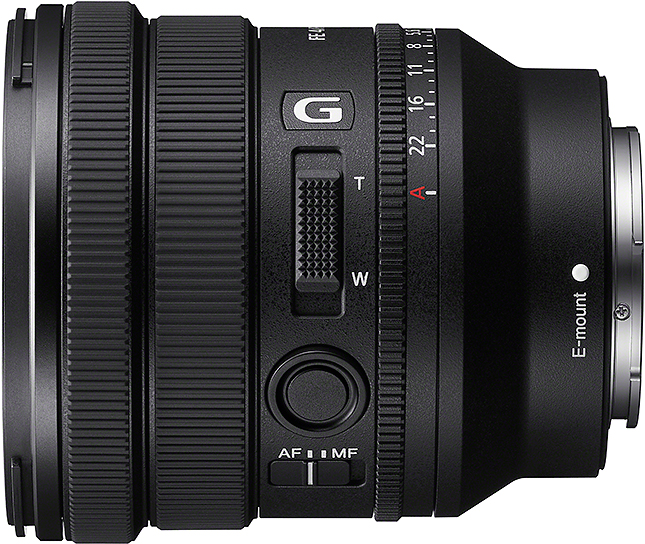 |
Advanced Features for Video Including a New Power Zoom Function
Based on feedback from leading creators, Sony specifically designed the FE PZ 16-35MM F4 G to deliver the refined imagery and control for today’s video needs. It features the latest lens technology to reduce focus breathing as well as focus and axial shift when zooming to ensure the highest quality video is easily captured. Focus, zoom, and aperture operation are also extremely quiet, greatly reducing noise and vibration that can interfere with movie recording.
For the first time in a Sony Alpha lens the FE PZ 16-35MM F4 G uses four XD linear motors for the power zoom function in addition to the two XD linear motors used for focus. With this newly designed electronic power zoom system, the FE PZ 16-35MM F4 G provides advanced control with the response and immediacy of non-powered manual zoom. It features both a zoom ring and a zoom lever with variable zoom speed that makes it easy to execute super-slow, fast or constant-speed change in focal length. Power zoom also minimizes camera shake or movement that can occur when operating a traditional zoom ring, and when used with compatible cameras, users can customize the zoom ring direction to suit shooting conditions. Zoom can also be controlled with the zoom lever on compatible cameras. Remote operation is also possible when using the Imaging Edge™ Mobile app (*iv).
As an added benefit, users can operate buttons and controls on compatible cameras or accessories for convenient zoom control, including the GP-VPT2BT Bluetooth Grip and Remote Commander RMT-P1BT to remotely control zoom while the camera is mounted on a gimbal (*v).
Furthermore, Linear Response MF ensures high repeatability as the focus ring responds directly and repeatably to subtle control when focusing manually. An aperture ring makes manual aperture/iris control fast, direct, and easy. The aperture ring includes a switch that can select aperture click stops that are ideal for photography or de-click operation for smooth iris control which is ideal for video.
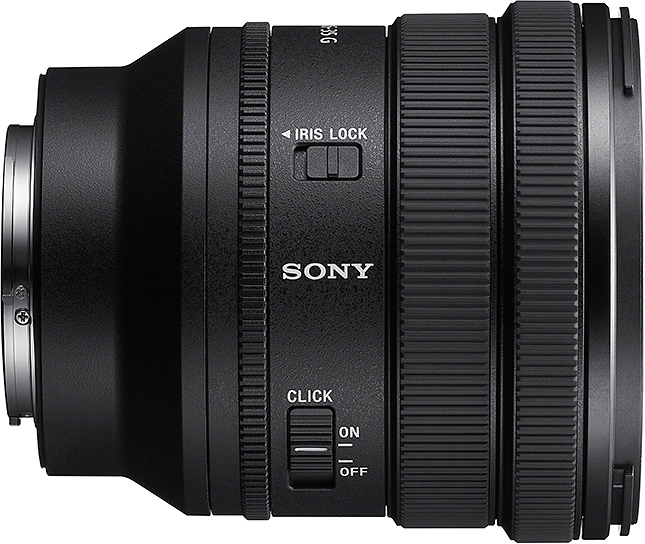 |
Superior Mobility, Control and Reliability
World-class design and technology come together to deliver a compact, lightweight lens that also includes focus, zoom and aperture/iris rings and power zoom for unprecedented mobility and handling.
Using internal focus and internal zoom, the overall length of the lens remains constant during use for ideal balance and handling. Consistent balance makes this lens an ideal choice for gimbal-mounted movie shooting or use with a matte box. The focus ring can be easily controlled while shooting movies, and the adjacent focus and zoom rings are different sizes so they can be easily operated by feel while viewing the monitor.
More convenient features on the FE PZ 16-35MM F4 G include the Iris Lock Switch that can be engaged to prevent the aperture ring from being accidentally moved between the auto and F4 - F22 settings and the customizable focus hold button for convenient control.
As the world’s lightesti F4 wide-angle power-zoom lens, the FE PZ 16-35MM F4 G weighs just 12 ounces (353 grams), 30% less than the Vario-Tessar T* FE 16–35 mm F4 ZA OSS and is just 3.17 inches x 3.47 inches (80.5mm x 88.1mm) in size with a filter diameter of φ72mm. The lens also has a dust and moisture resistant design , as well as a fluorine front element coating to keep it clean and reliable for outdoor use.
Pricing and Availability
The new FE PZ 16-35MM F4 G will be available in June 2022 for approximately $1,200.00 USD and $1,500.00 CAD. It will be sold at a variety of Sony’s authorized dealers throughout North America.
i - Hi+” continuous shooting mode. Effective at 1/125 sec. or higher shutter speed. In AF-C mode at shutter speeds of 1/250 sec. or higher the maximum continuous frame rate will depend on the shooting mode.
ii - 4K: 3,840 x 2,160 pixels. 8K: 7,680 x 4,320 pixels.
iii - Compatibility info at: https://www.sony.net/dics/breathing/
Available in movie mode only. Angle of view and image quality may change slightly when this function is used. Compensation may not be able to cover all situations.
iv - Download Imaging Edge app at Google Play and the App Store. Network services, content, and operating system and software subject to terms and conditions and may be changed, interrupted or discontinued at any time and may require fees, registration and credit card information. Membership to Imaging Edge account and app on smartphone required with connection to WiFi. See Imaging Edge terms and conditions/privacy policy for details.
v - Zoom operation depends on the body used. Refer to the help guide for details.
vi - Not guaranteed to be 100% dust and moisture proof.
Sony FE PZ 16-35mm f/4 G SELP1635G
Your purchases support this site
Buy the Sony FE PZ 16-35mm f/4 G SELP1635G
Sony FE PZ 16-35mm f/4 G SELP1635G User Reviews
-
Totally manual, no electronics to fail. Wide angle perspective gives very much needed apparent DOF at high magnification.a bit heavy but considered not cons
There's some degree of distortion present at all focal lengths, but it's especially severe at 16mm when looking at uncorrected RAW files.
reviewed June 9th, 2023
